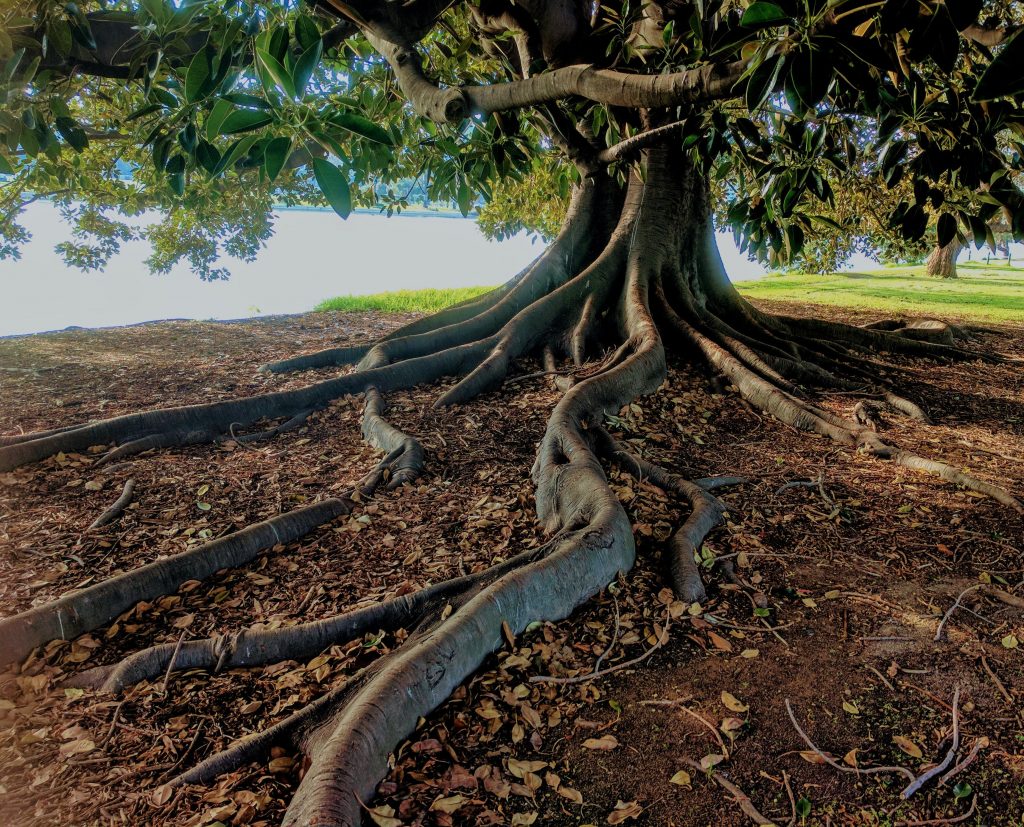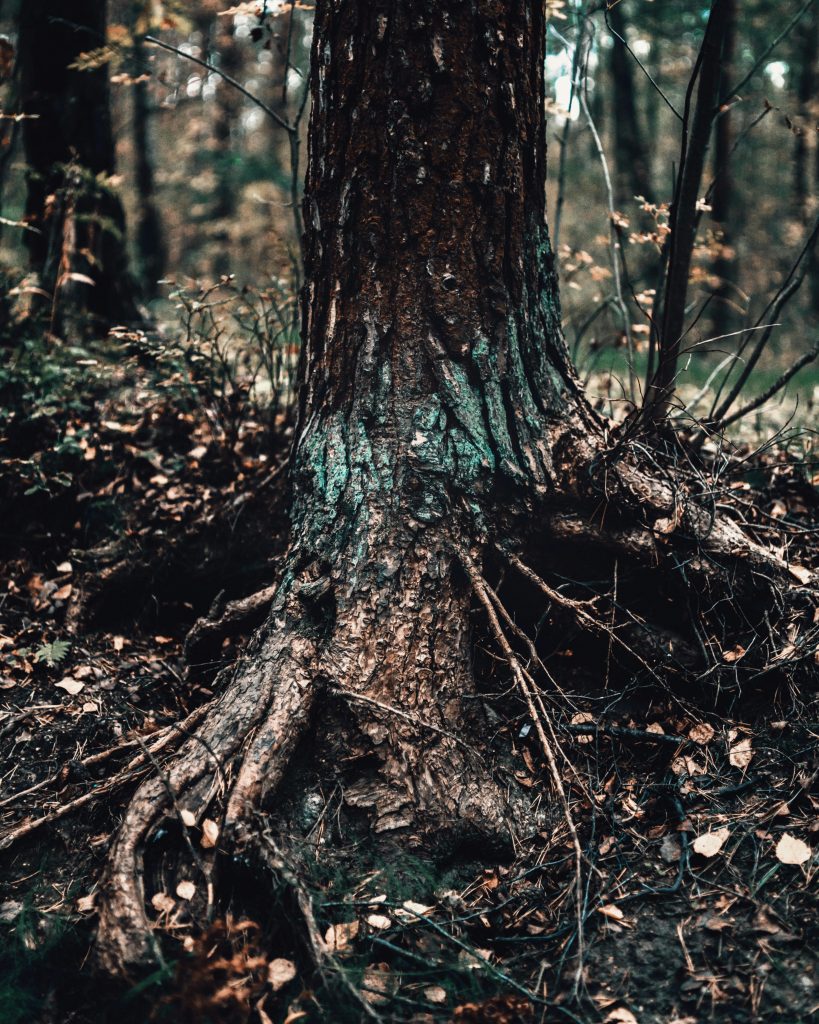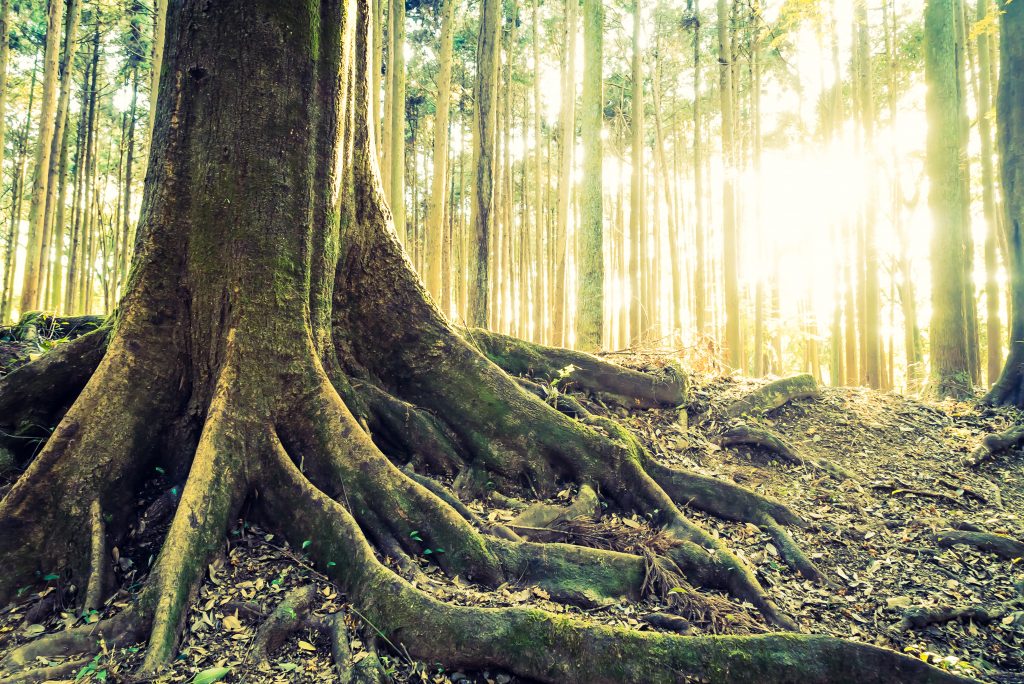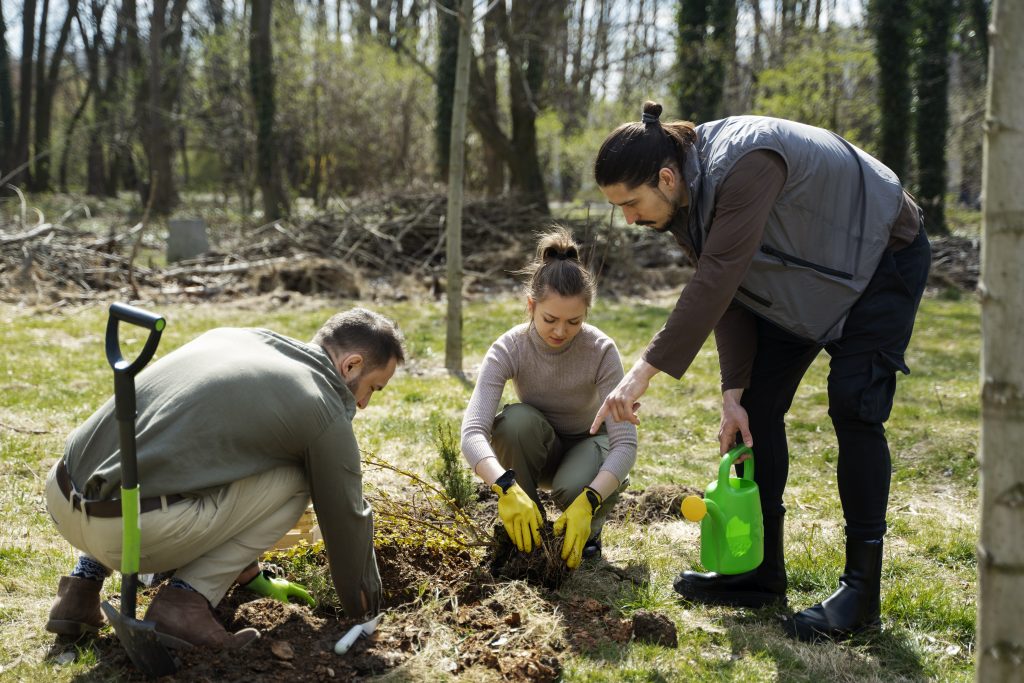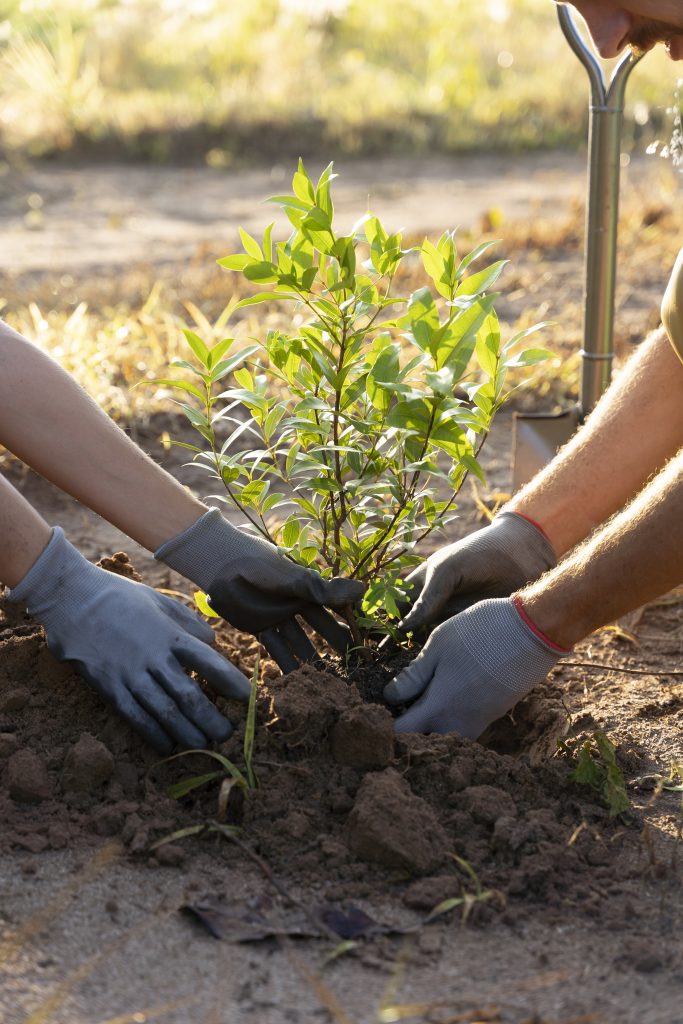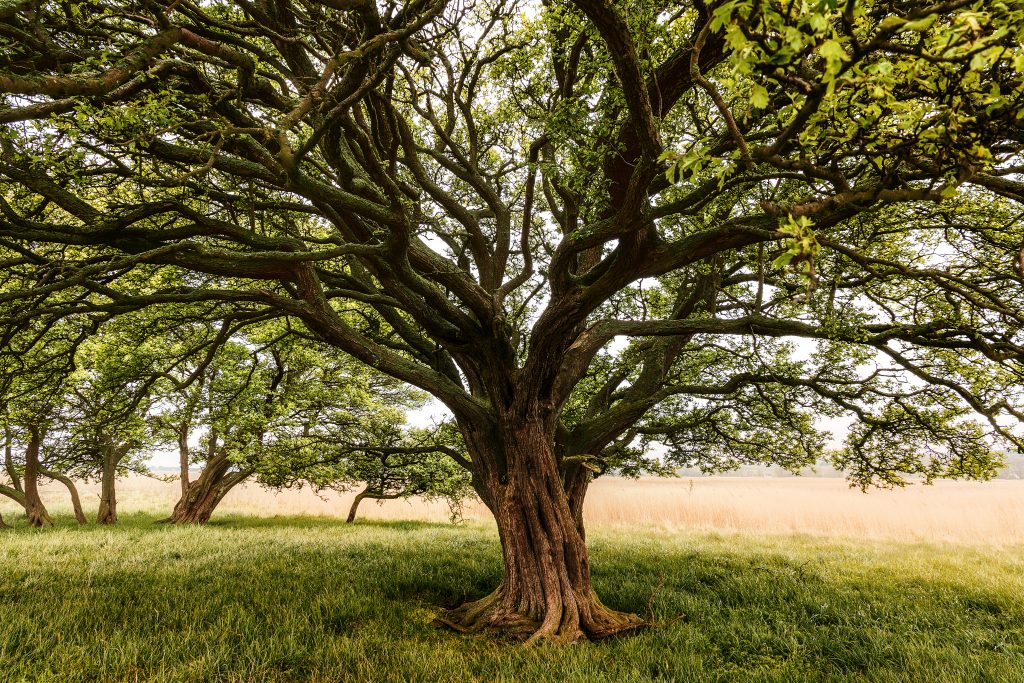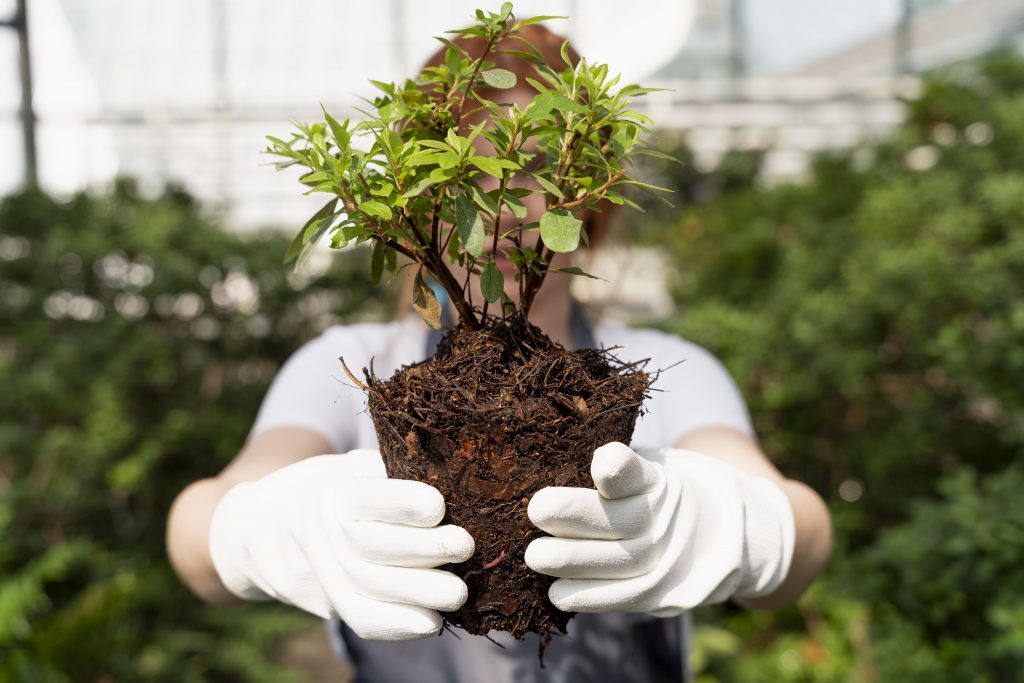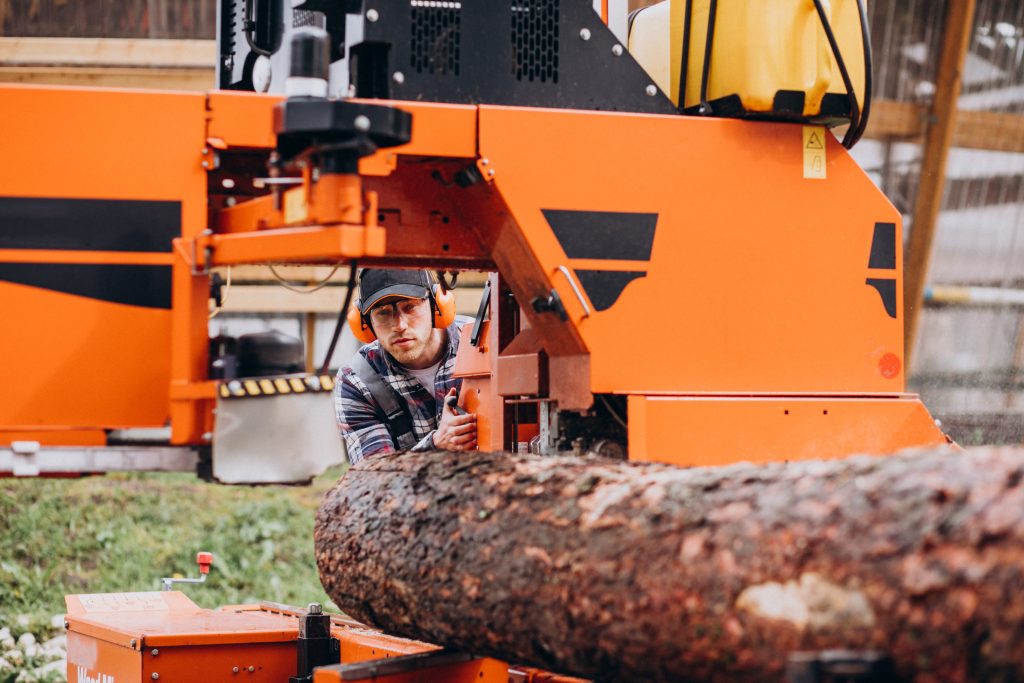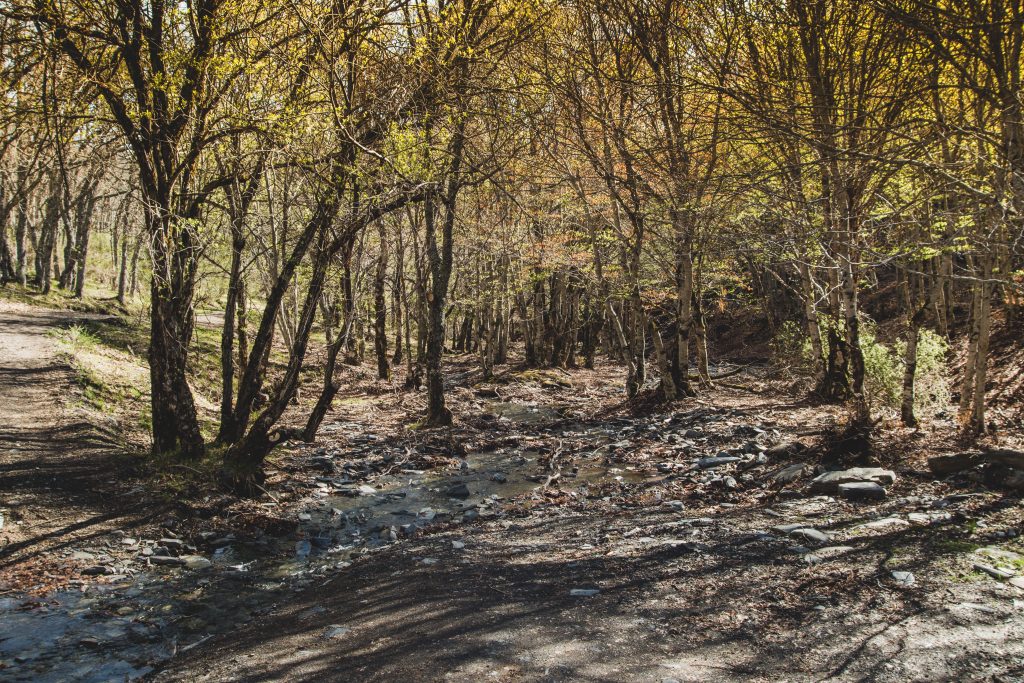How Much Does Tree Removal Cost Near Me
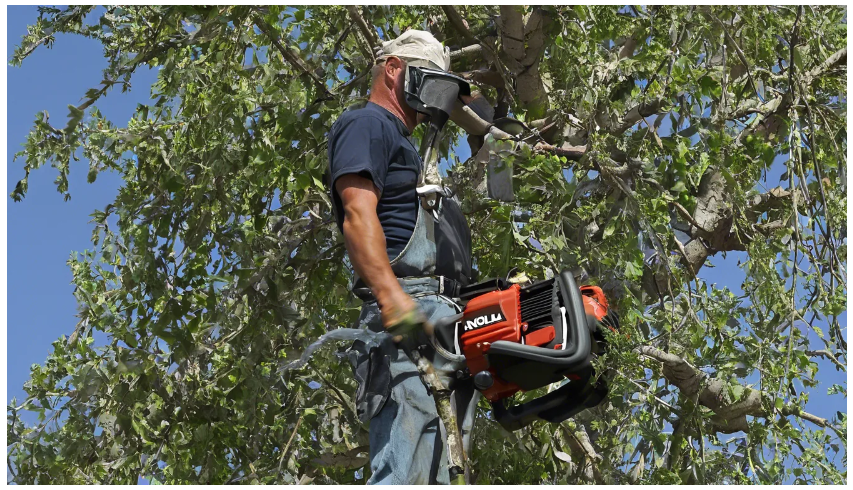
Looking to get rid of that unwanted tree in your yard? Wondering how much it’s going to cost you? Well, fear not! In this article, we’ve got all the information you need on the cost of tree removal near you. Our expert arborists have analyzed various factors such as tree size, location, accessibility, and additional services to give you an accurate estimate. So, sit back, relax, and let us guide you through the process of tree removal cost near you.
Key Takeaways
- Factors such as tree size, location, accessibility, and additional services required all impact the cost of tree removal.
- Consulting with a professional arborist or tree removal specialist can help accurately estimate the total cost.
- DIY tree removal may save costs, but it can be dangerous and complex, while hiring a professional ensures safe and efficient removal.
- The average cost of tree removal ranges from $300 to $1,500 per tree, but prices may vary depending on specific circumstances.
Introduction to Tree Removal Cost Near Me
Tree removal can be expensive depending on your location. If you’re considering removing a tree from your property, it’s important to understand the factors that can affect the cost. Here are four key factors to consider:
- Tree size: The size of the tree plays a significant role in determining the cost of removal. Larger trees require more time, equipment, and manpower to safely remove, resulting in higher costs.
- Location: The location of the tree also affects the cost. If the tree is close to utility lines, buildings, or other structures, additional precautions and specialized techniques may be required, increasing the overall cost.
- Accessibility: Easy access to the tree can make the removal process quicker and more affordable. However, if the tree is located in a hard-to-reach area, such as a backyard with limited access, the cost may be higher due to the additional effort required.
- Additional services: Certain tree removal techniques, such as stump grinding or debris removal, may come at an additional cost. These services can enhance the overall appearance of your property but should be considered when estimating the total cost.
Understanding these factors can help you plan and budget for tree removal. By exploring cost-saving strategies and consulting with a professional arborist or tree removal specialist, you can make informed decisions and ensure the removal process is carried out efficiently and safely.
Now, let’s delve into the history of tree removal and its evolution over time.
Tree Removal History
Looking back, you might be surprised by the long history of removing trees. Tree removal techniques have evolved over time, with early methods involving manual labor, such as axes and saws. Nowadays, modern equipment like chainsaws and cranes make the process more efficient and less time-consuming.
When it comes to tree removal, safety precautions are of utmost importance. A professional arborist or tree removal specialist would prioritize safety by wearing protective gear, ensuring the area is clear of people and obstacles, and using proper techniques to prevent accidents or damage to surrounding property.
As for the cost of tree removal, it varies depending on several factors. Tree size plays a significant role, as larger trees require more time and effort to remove. The location of the tree also affects the cost, with trees near buildings or power lines being more challenging to remove safely. Accessibility is another consideration, as trees in hard-to-reach areas may require specialized equipment or additional labor.
Additional services like stump removal or debris disposal can also impact the overall cost. It is essential to consult with a professional to get an accurate estimate based on your specific circumstances.
Now that you have an understanding of the history and factors that affect tree removal costs, let’s dive into some tips on how to save money and ensure a smooth tree removal process.
Tips
When considering the cost of tree removal near your location, there are several factors that can affect pricing. An arborist or tree removal specialist would provide you with detailed and accurate information, taking into account factors such as tree size, location, accessibility, and any additional services that may impact the overall cost. It is important to understand the average cost estimates and weigh the pros and cons of DIY tree removal versus hiring a professional to ensure the job is done safely and efficiently.
Factors Affecting Pricing
One of the factors that can affect the pricing of tree removal near you is the size of the tree. An arborist or tree removal specialist would provide detailed and accurate information about the cost of tree removal in different locations. They would consider factors such as tree size, location, accessibility, and any additional services that may affect the overall cost. For instance, larger trees may require specialized equipment and more manpower, which can increase the price. Additionally, certain locations may require tree removal permits, adding to the expenses. A professional specialist would be knowledgeable about these factors and would be able to provide an estimate based on your specific circumstances. Understanding these factors can help you make an informed decision when considering tree removal. Now, let’s explore the average cost estimates for tree removal near you.
Average Cost Estimates
To get an idea of the average cost estimates for removing a tree in your area, you can reach out to local arborists or tree removal specialists. These professionals have the knowledge and expertise to provide detailed and accurate information about the cost of tree removal in different locations. They will consider various factors that can affect the overall cost, such as the size of the tree, its location, accessibility, and any additional services that may be required. By consulting with an arborist or tree removal specialist, you can obtain reliable and trustworthy information about the average costs associated with tree removal near your location. This will help you make an informed decision about whether to hire a professional or attempt the task yourself. Speaking of which, let’s now explore the pros and cons of DIY tree removal versus hiring a professional.
DIY Vs. Professional
Let’s now compare the advantages and disadvantages of doing it yourself versus hiring a professional for tree removal. When it comes to DIY tree removal, one of the main benefits is cost savings. By doing it yourself, you can avoid paying for professional expertise. However, it’s important to note that tree removal can be a dangerous and complex task. Hiring a professional ensures that the job is done safely and efficiently. An arborist or tree removal specialist would provide detailed and accurate information about the cost of tree removal in different locations. They would include factors such as tree size, location, accessibility, and any additional services that may affect the overall cost. Their professional expertise guarantees reliable and trustworthy information. Now, let’s explore the traits of affordable tree removal services.
Traits of Affordable Tree Removal Services
The traits of affordable tree removal services often include competitive pricing and efficient work. When seeking the cost of tree removal in different locations, an arborist or tree removal specialist would provide you with detailed and accurate information. They would consider factors such as tree size, location, accessibility, and any additional services that may affect the overall cost. By doing so, they ensure that the information provided is reliable and trustworthy.
Affordable tree removal services also offer savings opportunities. They may have special discounts or promotions for certain times of the year or specific services. It’s worth checking their website or contacting them directly to inquire about any available discounts that could help you save money on tree removal.
Customer reviews are another important aspect to consider when looking for affordable tree removal services. Reading reviews from previous customers can give you an idea of their pricing and the quality of their work. Positive reviews often indicate that the company provides efficient and cost-effective tree removal services.
Now that you understand the traits of affordable tree removal services, let’s move on to the steps for efficient and safe tree removal.
Steps for Efficient and Safe Tree Removal
When hiring a professional for efficient and safe tree removal, it’s important to ensure they have the necessary experience and equipment. An arborist or tree removal specialist would provide detailed and accurate information about the cost of tree removal in different locations. They would include factors such as tree size, location, accessibility, and any additional services that may affect the overall cost. Here are four safety precautions and equipment needed for efficient and safe tree removal:
- Safety gear: A professional tree removal specialist would always wear protective gear, including helmets, ear protection, eye protection, and cut-resistant clothing. This ensures their safety while working with heavy equipment and sharp tools.
- Chainsaws and pruners: To remove branches and limbs, a specialist would use chainsaws and pruners. These tools are essential for cutting through thick wood and ensuring precise cuts.
- Climbing equipment: For trees that require climbing, tree removal specialists use climbing ropes, harnesses, and spikes. These tools help them safely ascend and descend trees while carrying out the removal process.
- Cranes and lifts: In some cases, tree removal may require the use of cranes or lifts to safely remove large or hazardous trees. These equipment provide stability and allow professionals to access hard-to-reach areas.
Goals
To achieve your goals for tree removal, it’s essential to communicate clearly with the arborist or tree removal specialist about your specific needs and expectations. They can provide you with detailed and accurate information about the cost of tree removal in different locations. Factors such as tree size, location, accessibility, and any additional services needed will affect the overall cost. By understanding these factors, you can make informed decisions and implement cost-saving strategies.
Here is a table that outlines the average cost of tree removal based on different factors:
| Tree Size |
Location |
Accessibility |
Average Cost |
| Small |
Urban Area |
Easy |
$500 – $1000 |
| Medium |
Suburban Area |
Moderate |
$1000 – $1500 |
| Large |
Rural Area |
Difficult |
$2000 – $3000 |
By considering sustainability practices, you can further reduce the cost of tree removal. For example, you can inquire about options for recycling or repurposing the removed trees. Some arborists may offer services such as mulching or using the wood for firewood, which can help minimize waste and save on disposal fees. Additionally, scheduling tree removal during off-peak seasons or combining multiple tree removals in one visit can also lead to cost savings.
Sustainable Habits
By considering sustainable practices, you can reduce the impact on your wallet and the environment when removing trees. When it comes to tree removal, there are several cost-saving tips that can help you achieve both financial and environmental benefits. First, consider hiring a local arborist or tree removal specialist who is knowledgeable about the specific costs in your area. They will take into account factors such as tree size, location, accessibility, and any additional services that may affect the overall cost.
To make the process more sustainable, ask the specialist if they offer tree recycling options. Some professionals may have partnerships with recycling facilities where they can take the removed trees for proper disposal or repurposing. This not only reduces waste but can also save you money on disposal fees.
Another sustainable practice to consider is replanting. If you must remove a tree, ask the specialist about options for planting a new one in its place. This helps to maintain the ecological balance and contributes to a healthier environment.
A Real-Life Story
Have you ever heard a real-life story that highlights the importance of sustainable tree removal practices? Let me share one with you. Last year, a homeowner named Sarah needed to have a large tree removed from her property. She called a reputable tree removal specialist who explained the process and provided a detailed cost estimate. The specialist considered factors such as the size of the tree, its location, and accessibility. Sarah was also offered additional services like stump grinding and debris removal. By opting for sustainable practices, such as recycling the wood and using eco-friendly equipment, Sarah could reduce the environmental impact and save money as well. The total cost of the tree removal was $1,500, which included all the necessary services. This real-life experience demonstrates how considering sustainable options and obtaining a thorough cost estimate from a professional can ensure a smooth and cost-effective tree removal process. Now, let’s move on to the next section where we will explore some helpful quotes from arborists and tree removal specialists.
Quotes
Now that you have heard a real-life story about tree removal, let’s dive into the topic of getting quotes for tree removal services. As an arborist or tree removal specialist, I can provide you with detailed and accurate information about the cost of tree removal in different locations.
When it comes to receiving quotes for tree removal, there are several factors that can influence the overall cost. One of the most significant factors is the size of the tree. Larger trees typically require more labor and equipment, resulting in higher costs. Additionally, the location of the tree plays a role in determining the price. If the tree is near structures or power lines, extra precautions and specialized equipment may be necessary, increasing the cost.
Accessibility is another important consideration. If the tree is in a hard-to-reach area, such as a backyard with limited access, the removal process may be more challenging and time-consuming, leading to higher expenses.
It’s also crucial to be aware of any additional services that may affect the overall cost. For instance, stump removal, limb chipping, or debris hauling may incur additional charges.
Lastly, it’s essential to be mindful of hidden costs that may arise during the tree removal process. Unexpected issues, such as underground utilities or the presence of hazardous materials, can increase the overall price.
Secrets
One of the most important things to keep in mind is that tree removal specialists are highly trained and experienced professionals. An arborist or tree removal specialist would provide you with detailed and accurate information about the cost of tree removal in different locations. They would consider factors such as tree size, location, accessibility, and any additional services that may affect the overall cost.
When it comes to the secrets of tree removal cost, there are a few key things to know. Firstly, hiring a professional tree removal service can actually save you money in the long run. While it may seem more affordable to tackle the job yourself, there are often hidden costs and risks involved. Tree removal specialists have the proper equipment and expertise to safely and efficiently remove trees, minimizing the chance of property damage or personal injury.
Another benefit of affordable tree removal services is that they can help enhance the aesthetics and value of your property. Trees that are diseased, damaged, or overgrown can be an eyesore and may even pose a danger. By investing in professional tree removal, you can improve the overall appearance of your landscape and create a safer environment for you and your family.
Insights on Tree Removal Cost Near Me
When hiring a professional tree removal service, you’ll get detailed information about the expenses involved in removing trees in your area. An arborist or tree removal specialist would provide the expertise needed to accurately determine the cost of tree removal in different locations. They consider various factors, such as tree size, location, accessibility, and any additional services that may affect the overall cost.
Tree size plays a significant role in determining the cost of removal. Larger trees require more time, equipment, and manpower to safely remove. Additionally, the location of the tree can impact the cost. Trees near buildings, power lines, or other obstacles may require extra precautions and specialized techniques.
Accessibility is another important factor. If the tree is in a challenging location or difficult to access, it may require specialized equipment or additional labor, which can increase the cost.
In addition to these factors, any additional services, such as stump removal or debris cleanup, will also affect the overall cost of the tree removal process.
By understanding these factors, you can better budget for tree removal in your area. With the help of a professional tree removal specialist, you can receive accurate and reliable information about the average costs associated with tree removal near your location.
Understanding the cost of tree removal is essential, as it allows you to plan and budget accordingly. By obtaining detailed information from a tree removal specialist, you can make informed decisions about the removal process. This will help you ensure that you receive the benefits of affordable tree removal services without compromising on quality or safety.
Benefits of Affordable Tree Removal Services
To better understand the advantages of affordable tree removal services, you should consider the positive impact they can have on your property’s aesthetics and overall safety. Hiring a professional arborist or tree removal specialist can provide detailed and accurate information about the cost of tree removal in your specific location. They will take into account factors such as tree size, location, accessibility, and any additional services that may affect the overall cost.
One of the key benefits of affordable tree removal services is the improvement in your property’s aesthetics. Removing unwanted or damaged trees can enhance the visual appeal of your landscape, making it more attractive and inviting. Additionally, removing diseased or dead trees can prevent them from potentially falling and causing damage to your property or injuring people nearby. This improves the overall safety of your surroundings.
Affordable tree removal services also offer the advantage of saving you time and effort. Professional tree removal specialists have the necessary equipment and expertise to efficiently and safely remove trees from your property. This means you don’t have to worry about the hassle and potential risks associated with DIY tree removal.
By hiring affordable tree removal services, you can ensure that the job is done properly and in accordance with industry standards. These specialists have the knowledge and experience to handle tree removal with precision, minimizing the risk of accidents or damage to surrounding structures.
Lessons
When considering the cost of tree removal, there are several factors that can affect the overall price. An arborist or tree removal specialist would provide you with detailed information on these factors, including the size of the tree, its location, accessibility, and any additional services required. In order to make an informed decision, it’s important to understand the average price range for tree removal services and to consider whether it’s more cost-effective to hire a professional or attempt a DIY approach.
Factors Affecting Cost
You should consider factors like tree size, location, and complexity of the job to determine the cost of tree removal near you. When it comes to tree removal, there are several factors that can affect the overall cost. An arborist or tree removal specialist would provide detailed and accurate information about the cost of tree removal in different locations. They would take into account factors such as tree size, location, accessibility, and any additional services that may affect the overall cost. It’s important to note that the cost can vary depending on these factors. For example, larger trees may require more time and effort to remove, resulting in a higher cost. Additionally, trees located near structures or power lines may require specialized equipment and techniques, which can also impact the cost. By considering these factors, you can make a more informed decision and potentially save on the cost of tree removal.
Average Price Range
The average price range for removing a tree can vary depending on factors such as tree size, location, and complexity of the job. An arborist or tree removal specialist would provide detailed and accurate information about the cost of tree removal in different locations. They would consider factors such as tree size, location, accessibility, and any additional services that may affect the overall cost. Tree removal costs can range anywhere from $300 to $4,500, with the average cost falling around $900 to $1,500. Larger trees with more branches and foliage will typically cost more to remove, as they require more time and labor. Trees located near buildings or power lines may also increase the cost due to the additional safety precautions that need to be taken. Now let’s explore the options of DIY tree removal versus hiring a professional.
DIY Vs Professional
Hiring a professional for tree removal could save you time and potential safety hazards. An arborist or tree removal specialist would provide detailed and accurate information about the cost of tree removal in different locations. They would consider factors such as tree size, location, accessibility, and any additional services that may affect the overall cost. By choosing a professional, you can benefit from their expertise and knowledge in the field. They will ensure that the information provided is reliable and trustworthy, giving you peace of mind. DIY tree removal may seem like a cost-effective option, but it comes with its own set of challenges. Without proper knowledge and equipment, you could end up causing more damage or even injuring yourself. So, it’s important to weigh the DIY benefits against the professional advantages before making a decision. Moving on to routines {yt}, let’s explore some key steps in maintaining healthy trees.
Routines
There’s usually a lot of variation in the cost of tree removal services near you. When it comes to the cost of tree removal, there are several factors that can influence the overall price. An arborist or tree removal specialist would provide detailed and accurate information about the cost of tree removal in different locations. They would take into account factors such as tree size, location, accessibility, and any additional services that may affect the overall cost.
Routines play a significant role in sustainable tree removal practices. Regular tree maintenance and pruning can help prevent the need for complete removal in the future. By establishing a routine of tree care, you can ensure the health and longevity of your trees while minimizing the risk of costly removals. Additionally, sustainable practices such as recycling or repurposing the removed trees can reduce waste and contribute to a more environmentally friendly approach to tree removal.
Understanding the average costs associated with tree removal near your location can help you make informed decisions. By consulting with a professional arborist or tree removal specialist, you can get a better idea of the specific costs involved in removing a tree on your property. This information will be invaluable in weighing the pros and cons of tree removal and determining the best course of action for your unique situation.
Pros and Cons
Considering the pros and cons of removing a tree on your property can help you make an informed decision about its future. Tree removal is a significant undertaking that involves various factors that can impact the cost. An arborist or tree removal specialist would provide detailed and accurate information about the cost of tree removal in different locations. They would consider factors such as the size of the tree, its location, accessibility, and any additional services that may affect the overall cost.
There are both benefits and drawbacks to removing a tree. On the positive side, removing a tree can eliminate safety hazards, especially if the tree is diseased, damaged, or leaning dangerously. It can also enhance the aesthetics of your property and improve the health of surrounding trees and plants by removing competition for resources. Additionally, tree removal can create space for other landscaping or construction projects. However, there are also drawbacks to consider. Removing a tree can be an expensive process, especially for large or hard-to-reach trees. It can also impact the ecosystem and wildlife that rely on the tree for shelter or food.
Understanding these pros and cons can help you weigh the decision of whether to remove a tree on your property. By considering the costs, benefits, and drawbacks, you can make an informed choice that aligns with your needs and goals. Moving forward, it’s important to be aware of the dos and don’ts when it comes to tree removal, which we will discuss in the next section.
Dos and Dont’s
When it comes to tree removal, it’s crucial to follow the dos and don’ts to ensure a safe and successful process. Here are some important guidelines to keep in mind:

| Dos |
Dont’s |
| Hire a professional arborist or tree removal specialist |
Attempt to remove the tree yourself |
| Obtain necessary permits and permissions |
Neglect to check for underground utilities |
| Assess the tree’s condition and potential risks |
Neglect to consider the impact on surrounding vegetation |
| Use proper safety equipment and techniques |
Ignore local regulations and ordinances |
Following these dos and don’ts will help you avoid common mistakes and ensure a smooth tree removal process. It’s important to hire a professional who has the expertise and equipment to safely remove the tree. They will assess the tree’s condition and potential risks, ensuring that the removal is done efficiently and without causing damage to surrounding structures or vegetation. Obtaining the necessary permits and permissions is also crucial to comply with local regulations. It’s essential to use proper safety equipment and techniques to minimize the risk of accidents. Additionally, it’s important to consider the impact of tree removal on the environment and surrounding vegetation.
Mistakes to Avoid
To ensure a smooth tree removal process, it’s important to be aware of common mistakes that should be avoided. Hiring a professional tree removal specialist can save you time, money, and potential headaches. One common mistake is attempting to remove a tree yourself without the necessary expertise and equipment. This can lead to accidents, property damage, and even personal injury. Another mistake is not considering the location and accessibility of the tree. If the tree is in a hard-to-reach area or near power lines, the cost of removal may increase. Additionally, failing to obtain the necessary permits and permissions from local authorities can result in fines and legal issues. To save costs, it’s crucial to get multiple quotes from reputable tree removal companies and compare their services and prices. Consider bundling additional services, such as stump removal or limb trimming, to potentially save money. Being aware of these common mistakes and following cost-saving tips can help you navigate the tree removal process more efficiently.
Moving forward, it’s important to understand the key takeaways when it comes to the cost of tree removal near your location.
Key Takeaways
Remember, it’s crucial to understand the key takeaways regarding the expenses of having a tree removed in your area. When considering the cost of tree removal, there are several important factors that arborists or tree removal specialists would take into account. These pricing factors include tree size, location, accessibility, and any additional services that may be required.
Firstly, the size of the tree plays a significant role in determining the cost. Larger trees require more time, effort, and specialized equipment to remove, resulting in higher prices. Additionally, the location of the tree can affect the cost. If the tree is near structures or power lines, extra precautions and expertise may be necessary, leading to increased expenses.
Furthermore, accessibility is another critical factor. If the tree is easily accessible, it can be removed more efficiently, which can lower the overall cost. Conversely, if the tree is in a tight or hard-to-reach area, additional equipment and labor may be needed, resulting in higher prices.
Lastly, any additional services required, such as stump grinding or debris removal, can also impact the overall cost. These services are often priced separately and should be considered when estimating the total expense.
Understanding these key takeaways and pricing factors will help you have a better idea of the average costs associated with tree removal in your area. Now, let’s move on to specific action steps for tree removal cost near you.
Specific Action Steps for Tree Removal Cost Near Me
When considering the cost of tree removal near you, there are several key factors that can affect the overall price. These factors include the size of the tree, its location, accessibility, and any additional services that may be required. The average price range for tree removal can vary depending on these factors, so it is important to get multiple quotes from reputable arborists or tree removal specialists to ensure you are getting an accurate estimate for the job.
Factors Affecting Cost
You’ll want to consider factors like the size of the tree, its location, and any additional services needed when determining the cost of tree removal near you. An arborist or tree removal specialist would provide detailed and accurate information about the cost of tree removal in different locations. They would take into account factors such as the size of the tree, its location, and accessibility. Additionally, they would consider any additional services that may be required, such as stump grinding or debris removal. Tree removal insurance is also an important consideration, as it can protect you from liability in case of any accidents or damages during the tree removal process. The cost of tree removal can also be influenced by the type of equipment required for the job. By taking all these factors into account, you can get a better understanding of the average costs associated with tree removal near your location. Moving on to the average price range…
Average Price Range
The average price range for tree removal services in different locations can vary depending on factors such as tree size, location, and additional services required. An arborist or tree removal specialist would provide detailed and accurate information about the cost of tree removal in different locations. They would include factors such as tree size, location, accessibility, and any additional services that may affect the overall cost. The average cost can range from $300 to $1,500 per tree, but this can go higher for larger trees or those in hard-to-reach areas. Other cost factors may include stump removal, branch chipping, and debris removal. It’s important to note that these prices are just averages and may vary depending on your specific situation. To get a better idea of the cost of tree removal near you, it’s recommended to get multiple quotes from reputable tree removal companies. This will allow you to compare prices and services to make an informed decision.
Getting Multiple Quotes
When it comes to tree removal, it’s always a good idea to get multiple estimates before making a decision. By doing so, you can compare prices and ensure that you are getting the best deal for your specific needs. When getting estimates, it’s important to provide accurate information about the tree’s size, location, and accessibility. These factors can greatly impact the overall cost of the removal. Additionally, it’s essential to consider any additional services that may be needed, such as stump grinding or debris removal, as these can also affect the final price. By obtaining multiple quotes and comparing prices, you can make an informed decision and find a tree removal service that meets your budget and requirements.
Frequently Asked Questions
Are There Any Special Permits or Permissions Required for Tree Removal in My Area?
Special permits or permissions may be required for tree removal in your area. Check local regulations to determine the necessary permissions and tree removal permits. It’s important to adhere to these requirements to avoid any legal issues.
What Factors Can Affect the Cost of Tree Removal?
Factors affecting the cost of tree removal include tree size, location, accessibility, and additional services. Common mistakes include underestimating the complexity of the job or attempting DIY removal. Hiring a professional ensures accurate cost estimates and safe removal.
How Long Does the Tree Removal Process Usually Take?
On average, the tree removal process usually takes a few hours to a full day, depending on the size and complexity of the job. Factors like tree height, accessibility, and any additional services may affect the timeline.
Are There Any Alternatives to Complete Tree Removal, Such as Trimming or Pruning?
Tree maintenance, such as trimming or pruning, can be an alternative to complete tree removal. It helps preserve the health and appearance of the tree while being more cost-effective. Consult a professional arborist for advice.
What Should I Do With the Leftover Tree Debris After Removal?
After tree removal, you have disposal options for the leftover tree debris. Consider recycling options, such as chipping or mulching the debris, which can be reused for landscaping or composting purposes.
If you need a tree service in Utah, you can call:
Truco Services, Inc.
4640 Commerce Drive
Murray, Utah 84107
(801) 466–8044
https://truetreeservices.com/
